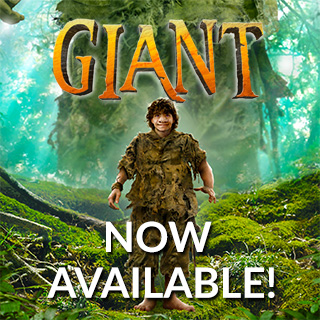Why Fantasy Must Be True
But in fantasy, as in life, bigger is not always better. What are the essential qualities that make the most powerful, enduring fantasy tales like the adventures of Harry, Frodo, or Meg in Madeleine L’Engle’s classic A Wrinkle in Time?
To start with, a story must be more than just a series of obstacles – a video game in literary form. If the main character only needs to survive a string of hurdles to attain the ultimate goal, the reader might have an enjoyable ride but not gain much in the way of meaning.
What, you might ask, is wrong with that?
Nothing, so far as it goes. A serial-obstacle fantasy can be an enjoyable read, a rollicking adventure while it lasts. But – just as a candy bar tastes great but doesn’t confer any nutritional value – this kind of story misses the deeper, lasting potential of fully developed fantasy. The sort of “real meal” that can fuel a lifetime of ideas and questions and meanings.
The best fantasy has three essential qualities: depth of character, truth of place, and richness of meaning. With them, we get an adventure that can delight, amaze, prod, expand, and sometimes even inspire.
Let’s begin with depth of character. A character who we care deeply about, who grows believably through his or her adventures, makes a story much more compelling. Just look at Wrinkle’s unlikely hero, Meg. She starts out friendless, unhappy, humiliated at school, and painfully insecure. Two hundred pages later, she is the one person in the whole universe who can save her lost brother…and who, by the power of that love, can change the very course of the stars.
In the best fantasy, the kind that stands the test of time, the hero’s character is deepened by every obstacle. So when this sort of hero confronts, for example, a European-style dragon who greedily guards a hoard of jewels and virgins, it’s more than just a battle of swords and claws and magic spells. The hero must also face the greed and hunger for power within. Only then can he or she really triumph. That outer obstacle leads to inner growth, while that inner growth leads to wisdom. And the reader joins in that experience.
Mythic heroes of this kind, and whatever obstacles they must face, are really a unified whole. As Joseph Campbell put it, they are “the outside and inside of a single, self-mirrored mystery.” It doesn’t matter whether such characters are human or non-human, male or female, culturally bound or universal. The essential unity of their inner struggles and outer quests remains the same.
Even the treasures and magical beings in a richly developed fantasy represent facets of the hero’s character. Take, for example, one of the most beloved figures of lore, King Arthur. When Malory’s Arthur pursues an elusive hart, he discovers the legendary Questing Beast, “the strangest beast that ever he saw or heard of.” That creature, in turn, leads him to greater mysteries that culminate in the supreme quest for the Holy Grail.
Is this just a medieval form of video game, a series of archaic hurdles? No – for one key reason. As he follows these unknown paths, Arthur is also exploring the deepest mystery of all: himself. And through that exploration, he grows. Otherwise, his story would most likely not have survived to the next generation – let alone into the next millennium.
Somehow, a fantasy author must dive deeply into characters – not only the heroes, but also the evildoers and all the rest. Invest in them. Know them fully – their voices, personal histories, habits, appearances, hopes, and fears. Their many sides, both light and dark. As well as their secrets. To bring those characters to life, the author needs to trust in them, breathe with them, live with them. For their fullest description lies in the author’s subconscious. How else could Madeleine L’Engle have taken the bold step of turning Meg’s so-called “faults” into virtues strong enough to defeat the forces of darkness?
Truth of place is the second essential quality of enduring fantasy. In such stories, place is more than just a setting, a backdrop to the action. It rises to a much higher level – to a form of character, with all the moods, contradictions, and subtleties of a human being.
If a place is fully and sensuously realized, we don’t just read about being there. We are there.
We join our heroes as they voyage to places that are bizarre, terrifying, and beautiful. Their amazing journey – the hero’s journey – is also ours.
With characters who grow and places that really come to life, a story gains genuine suspense. If all the main character does is leap over obstacles, one after another, where is the real satisfaction? We need to feel rising tension before that final release. This principle applies to making music, having sex, baking bread, opening a long-awaited gift – and also to reading a good story.
The third essential quality, richness of meaning, boils down to one thing: a big idea. Not lessons or sermons – far from it! I’m talking about rich, subtle, complex ideas. The most enduring questions about life. The key elements of what it means to be human, vulnerable, struggling, searching, making choices, and wholly alive.
Mythic tales with such underlying questions and ideas are more than stories. They are part of a fundamentally human endeavor: the search for meaning in life. That’s why so many people around the world, regardless of language or culture or time, have expressed their most important ideas through such tales.
Ultimately, the best fantasy is true. That may sound paradoxical, but the unique power of fantasy springs from its ability to selectively distort reality in pursuit of truth. Fantasy shows us reality not through a perfect mirror, but through a bent mirror, so the biggest questions of life can be more fully illuminated and explored. When the provocative stories we see in that magical mirror contain believable characters, realistic places, and meaningful ideas – then they have the power to change our lives.

